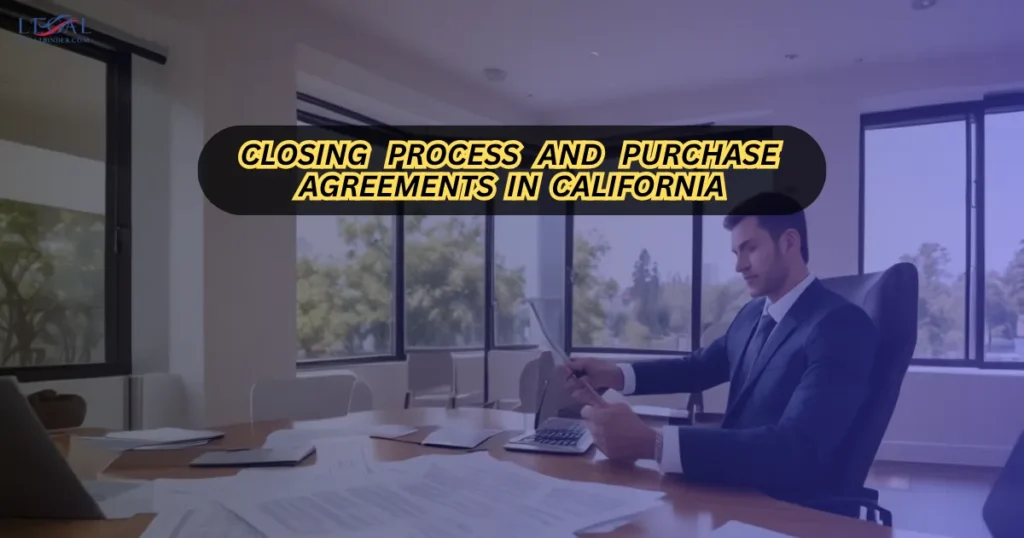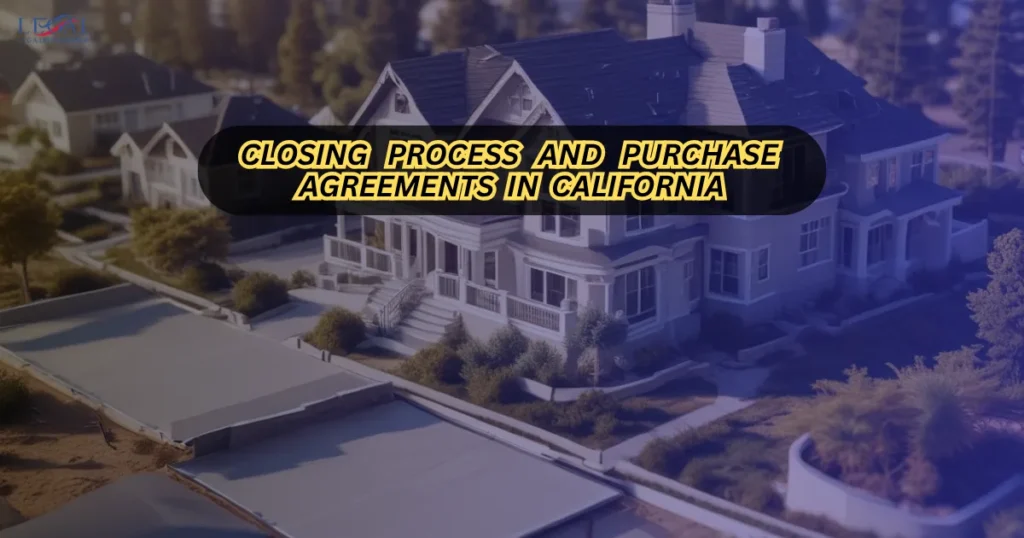Physical Address
304 North Cardinal St.
Dorchester Center, MA 02124
Physical Address
304 North Cardinal St.
Dorchester Center, MA 02124

Closing process and purchase agreements in California are more than legal formalities—they are the final steps in turning your dream of property ownership into reality. Whether you are a first-time homebuyer, a real estate investor, or selling a property you’ve cherished for years, understanding what happens between the signed agreement and handing over the keys is essential.

Imagine this: You’ve been searching for months, making offers, and finally—your dream home is under contract. The excitement builds, but so does the paperwork, deadlines, and legal requirements. Without a clear grasp of each step of the closing process, you risk unnecessary delays or even losing the deal. That’s why this comprehensive guide will walk you through every phase, ensuring you close with confidence and peace of mind.
For more step-by-step California real estate law insights, visit our homepage.
The closing process refers to the period between signing the purchase agreement and the official transfer of ownership. In California, this process is often managed through an escrow company, which acts as a neutral third party.
This contract sets the framework for the closing. It includes price, contingencies, closing date, and obligations for both parties.
Typical contingencies in California include:
Ensures there are no liens, disputes, or restrictions on the property.
Buyer verifies property condition before closing.
Includes the grant deed, settlement statement, and loan documents.
Funds move through escrow, and the deed is recorded at the county recorder’s office.
Ownership officially transfers to the buyer.

Specifies total price, deposit amount, and payment schedule.
Protect buyers and sellers, allowing contract cancellation under certain conditions.
Define responsibilities for clearing title and the role of the escrow company.
Set deadlines for finalizing the transaction and moving in.
States consequences if either party fails to fulfill the agreement.
How long does closing take in California?Generally 30–45 days, but it can be shorter or longer depending on contingencies and financing.Is escrow required in California?Yes, escrow is standard for most real estate transactions in California.Can the closing date be changed?Yes, but both parties must agree in writing.Who pays closing costs?It’s negotiable, though traditionally buyers and sellers split costs based on local custom.

Mastering the closing process and purchase agreements in California is the key to avoiding stress and ensuring a smooth transfer of property ownership. By understanding each stage, preparing for common challenges, and following best practices, you can move from offer to ownership without unnecessary delays.
Both buyers and sellers benefit from clarity, preparation, and proactive communication during closing. Consider your purchase agreement not just as a contract, but as your roadmap to a successful deal.
For more California real estate guides, resources, and legal tools, visit our home page.